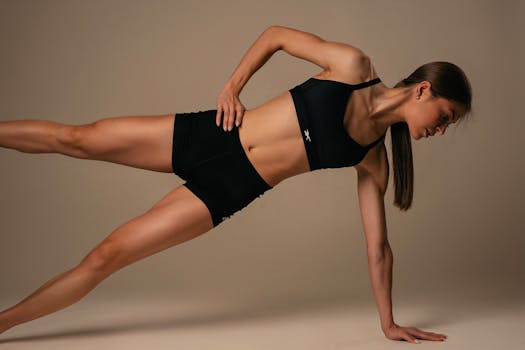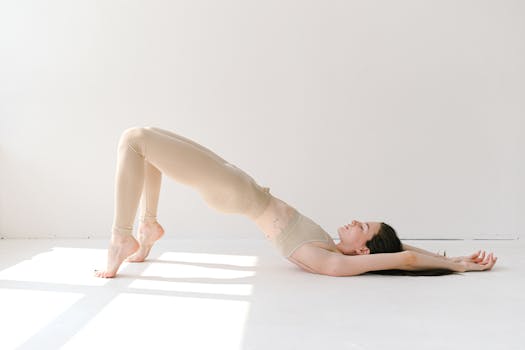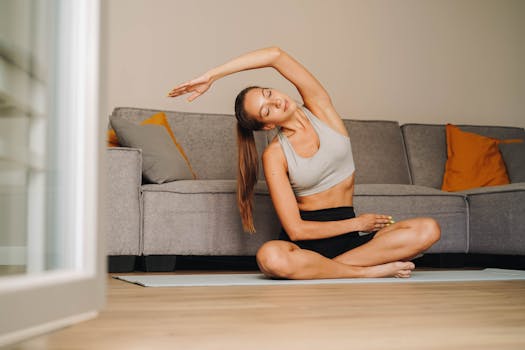
Mind-Body Connection: Enhancing Your Practice with the Principles of Yoga and Pilates
Mind-Body Connection, have you ever stopped to think about the incredible connection between your mind and body? As someone who’s passionate about yoga and Pilates, I’ve experienced firsthand the profound impact that these practices can have on both my physical and mental well-being. In this article, we’ll delve into the world of mind-body connection, exploring the principles of yoga and Pilates, and how you can enhance your practice to achieve a deeper sense of unity and harmony.
What is Mind-Body Connection?

So, what exactly is mind-body connection? Simply put, it’s the idea that our thoughts, feelings, and physical sensations are all intricately linked. Our minds have the power to influence our bodies, and vice versa. When we’re feeling stressed or anxious, our bodies tense up, and our minds can become clouded and unclear. On the other hand, when we’re feeling relaxed and centered, our bodies feel more open and receptive, and our minds are sharper and more focused.
The Principles of Yoga

Yoga is a powerful practice that has been around for thousands of years, originating in ancient India. The word ‘yoga’ comes from the Sanskrit word ‘yuj,’ meaning ‘to unite’ or ‘to join.’ And that’s exactly what yoga is all about – uniting the mind, body, and spirit. Through a combination of physical postures, breathing techniques, and meditation, yoga helps to cultivate a deeper sense of awareness and connection to ourselves and the world around us.
One of the key principles of yoga is the concept of ‘ahimsa,’ or non-violence. This means treating ourselves and others with kindness, compassion, and respect. As we practice yoga, we’re encouraged to listen to our bodies and honor their limitations, rather than pushing ourselves too hard and risking injury. This mindset of self-care and self-compassion is essential for cultivating a strong mind-body connection.
The Principles of Pilates

Pilates is a more modern practice, developed in the early 20th century by Joseph Pilates. Like yoga, Pilates is a holistic approach to fitness that focuses on building strength, flexibility, and body awareness. The core principles of Pilates include centering, concentration, control, precision, breath, and flow.
Pilates is all about engaging your core muscles and using your body efficiently. By focusing on proper alignment, breathing, and movement, you can build strength, improve your posture, and enhance your overall physical fitness. And, just like yoga, Pilates is a great way to reduce stress and anxiety, promoting a deeper sense of relaxation and well-being.
Enhancing Your Practice

- Listen to your body: Honor your physical limitations and take breaks when you need to. Remember, it’s not about pushing yourself to extremes, but about cultivating awareness and respect for your body.
- Focus on your breath: Breathing is a powerful tool for calming the mind and connecting with the body. Take deep, slow breaths, and feel the sensation of the air moving in and out of your body.
- Be present: Let go of distractions and focus on the present moment. Feel the sensations in your body, the sounds around you, and the rhythm of your breath.
- Practice regularly: Consistency is key when it comes to developing a strong mind-body connection. Aim to practice yoga and Pilates at least a few times a week, and ideally every day.
Conclusion

Mind-Body Connection, the principles of yoga and Pilates offer a powerful path to enhancing your practice and deepening your connection to yourself and the world around you. By listening to your body, focusing on your breath, being present, and practicing regularly, you can cultivate a stronger, more resilient mind-body connection. So why not give it a try? Join me on this journey of discovery, and let’s explore the incredible world of mind-body connection together!







